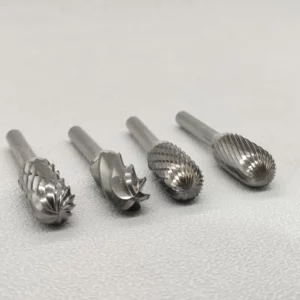Spis treści
Dźwignia kolankowaLarge Carbide Burr
Large carbide burrs are powerful tools that offer countless possibilities for both beginners and professionals in various industries. These versatile tools are widely used in metalworking, woodworking, sculpture, and even in the dental field. However, choosing the right large carbide burr for your specific needs can sometimes be overwhelming. In this comprehensive guide, we will explore the factors to consider when selecting a large carbide burr and provide expert tips on how to make the most of this innovative tool.
1. Understanding the Different Types of Large Carbide Burrs
Before delving into the selection process, it is crucial to familiarize yourself with the different types of large carbide burrs available in the market. There are several variations, such as ball-shaped, cone-shaped, cylinder-shaped, and flame-shaped burrs. Each shape serves a specific purpose and can perform different functions. For instance, a ball-shaped large carbide burr is ideal for contouring and shaping, while a cylinder-shaped burr is great for removing material quickly.
Let’s take an example of a professional woodworker who wants to create intricate designs on the surface of a hardwood table. In this case, the woodworker would require a large carbide burr with a cone-shaped tip. The cone-shaped burr provides precision and control necessary for etching intricate patterns onto the wood’s surface. Without this specific type of burr, achieving the desired result would be much more challenging.
2. Consider the Shank Size for Compatibility
When selecting a large carbide burr, compatibility with your power tool is crucial. Carbide burrs typically come with different shank sizes, such as 1/4 inch or 1/8 inch. It is essential to ensure that the shank size matches the collet size of your power tool. A misfit can result in inefficient performance and potential damage to the tool. Therefore, always check the shank size before purchasing a large carbide burr.
For instance, a beginner sculptor interested in working on small-scale projects may prefer a handheld rotary tool with a 1/8-inch collet. In this case, it would be wise to choose a large carbide burr with a 1/8-inch shank size for seamless compatibility. Failing to consider the shank size could lead to frustration and limitations in the work process.
3. Assessing the Quality and Durability
Quality and durability are paramount factors to consider when investing in a large carbide burr. The material composition, manufacturing process, and brand reputation play a significant role in determining the overall quality and durability of the burr. Carbide burrs made from high-quality tungsten carbide are known for their exceptional strength and durability, ensuring prolonged usability and resistance to wear and tear.
For example, a professional metalworker who frequently works on heavy-duty projects would highly prioritize the quality and durability of a large carbide burr. Investing in a reputable brand that offers carbide burrs made from top-grade tungsten carbide ensures that the tool can withstand the demanding nature of the work and consistently deliver precise results.
4. Understanding the Different Cutting Patterns
The cutting pattern of a large carbide burr refers to the arrangement and distribution of the teeth or flutes on the burr’s surface. The cutting pattern directly affects the cutting speed, material removal rate, and the finish achieved. The most common cutting patterns include single-cut, double-cut, and diamond-cut.
Let’s consider a professional dental technician who specializes in shaping and smoothing dental appliances. In this case, a diamond-cut large carbide burr would be the ideal choice. The diamond-cut pattern allows for a smooth finish and precise shaping, ensuring optimal patient comfort and aesthetic appeal. Using a burr with a different cutting pattern may result in jagged edges or uneven surfaces, compromising the integrity of the dental appliance.
5. Optimal Speed and RPM
To achieve optimal performance with a large carbide burr, it is essential to consider the speed and RPM (revolutions per minute) at which the burr operates. Different materials and cutting techniques require varying speeds for efficient material removal and desired results. Each large carbide burr has a recommended speed range specified by the manufacturer.
For instance, a beginner woodworker using a large carbide burr for shaping and detailing a wooden sculpture would need to adjust the speed of their power tool accordingly. A lower RPM would be suitable for intricate designs and detailed work, while a higher RPM might be necessary for rapid material removal. Adhering to the recommended speed range ensures optimal performance and prevents potential damages caused by incorrect usage.
In conclusion, choosing the right large carbide burr is vital to achieve excellent results in various industries. By understanding the different types, considering compatibility, assessing quality, and examining cutting patterns, you can make an informed decision when purchasing a large carbide burr. Additionally, understanding the optimal speed and RPM for different applications allows you to utilize the burr to its maximum potential. Whether you are a beginner or a professional, this comprehensive guide equips you with the knowledge and expertise needed to select and utilize a large carbide burr effectively. So, go ahead and explore the endless possibilities that this innovative tool offers.


